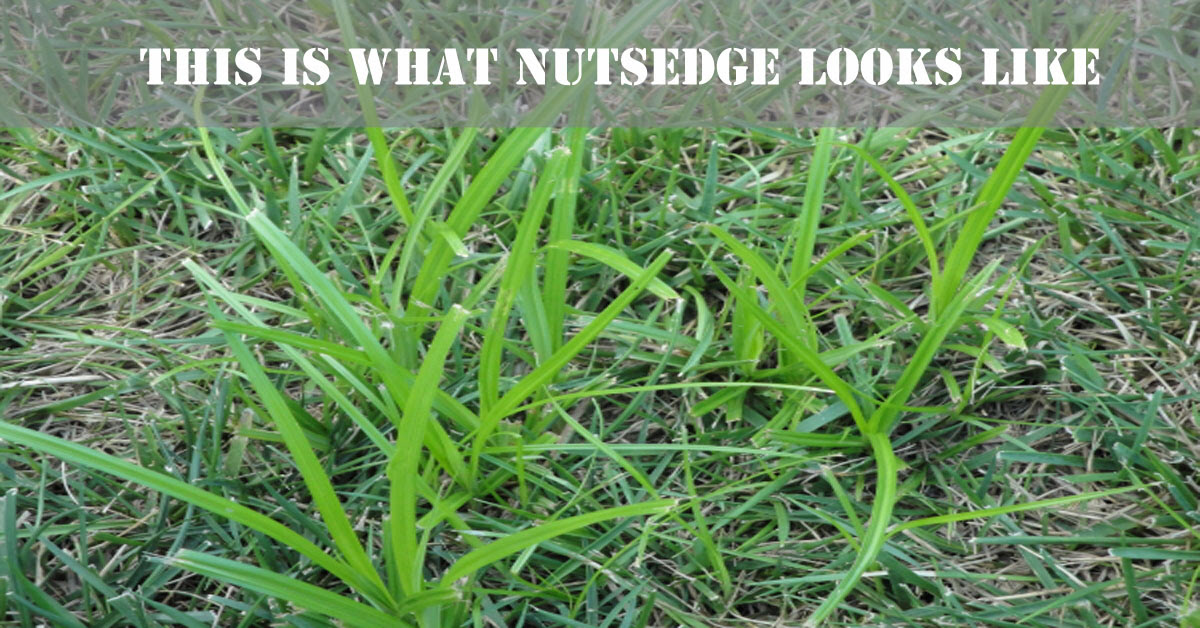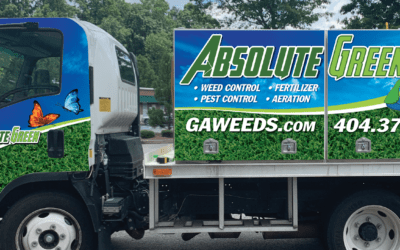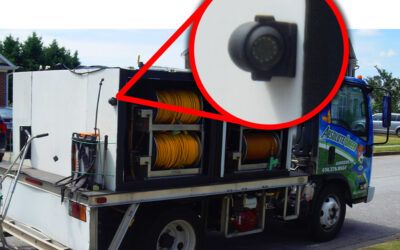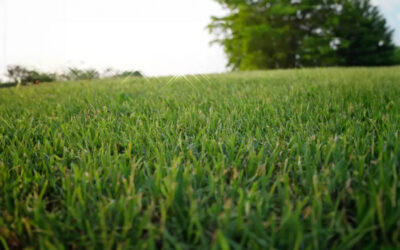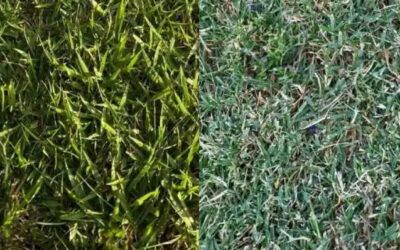I hate stubborn weeds, and Nutsedge is one of them. You can spray it, and it looks like it’s dead, but the very next season, it’ll be back again. Nutsedge is one of the most frustrating weeds for exactly this reason.
Nutsedge, also called Nutgrass, is distinguished by its triangular stem and shiny leaves. It grows taller than the rest of the grass within just a few days when it’s in season. Nutsedge is unique amongst weeds in its durability and its spread; below its grassy offshoots and stem is a hard, durable bulb – like a nut.
You can spray the leaves with herbicide all you like, but unless you want to use enough product to ‘salt the earth’ around it and prevent anything from growing, you’re not going to be have an impact on this nut and it will keep propagating in your lawn.
For reference, the instances of nutsedge in the picture here are only a few days old.
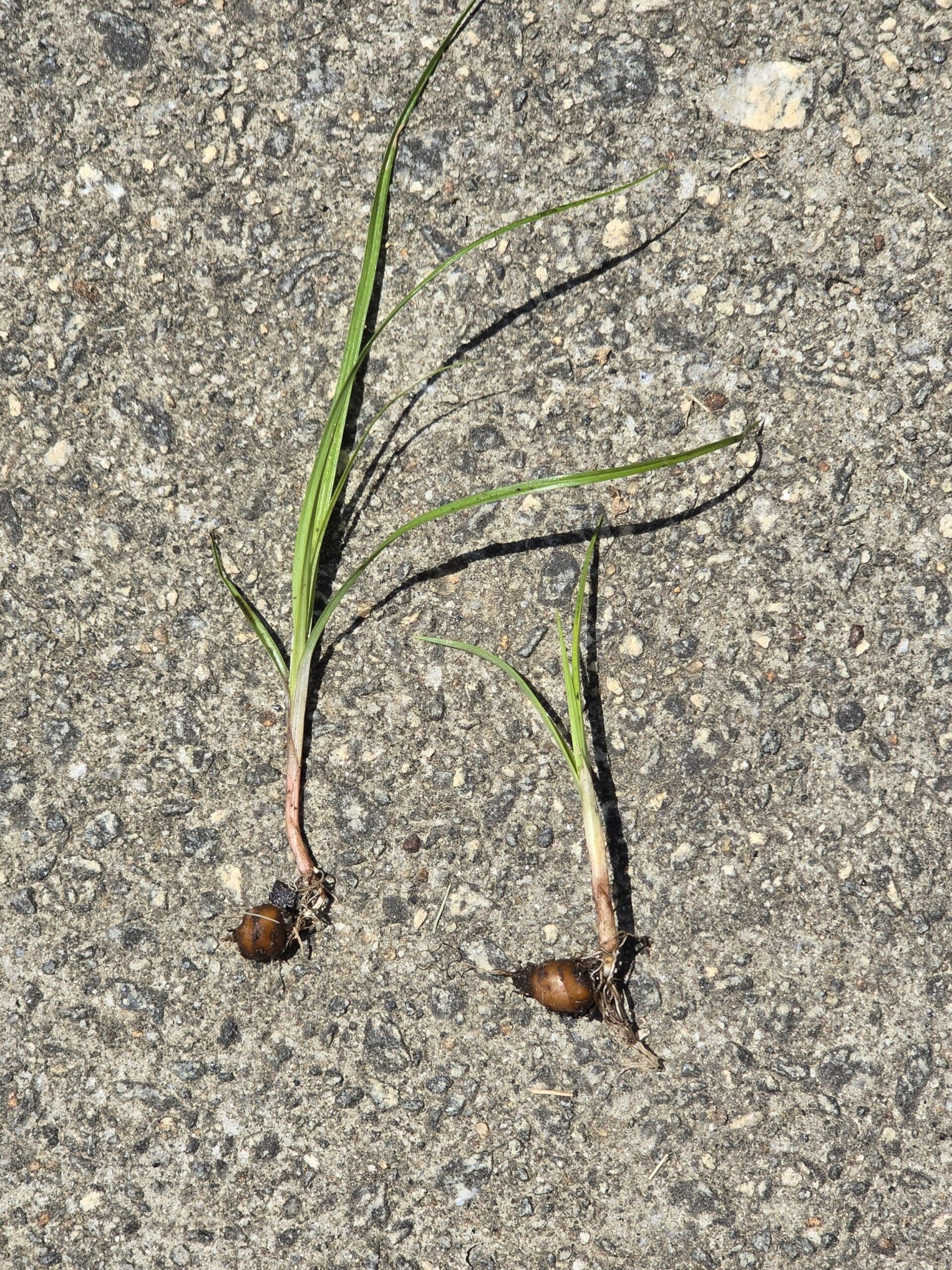
The only way to get rid of existing nutsedge patches without damaging your turf grass too much is to do so manually.
- Get a garden trowel or a shovel (not a flame thrower, even though you might be frustrated enough for one)
- Dig at least ten inches deep and several inches wider than the reach of nutsedge leaves on the surface to make sure you got all the underground tubers. If you leave any tubers behind, nutsedge can keep spreading. The best time for this is in the spring season
- Dispose of the nutsedge tubers and replace the dirt
It’s a lot of work, but thankfully, you can prevent new occurrences of nutsedge
by following these 5 guidelines.
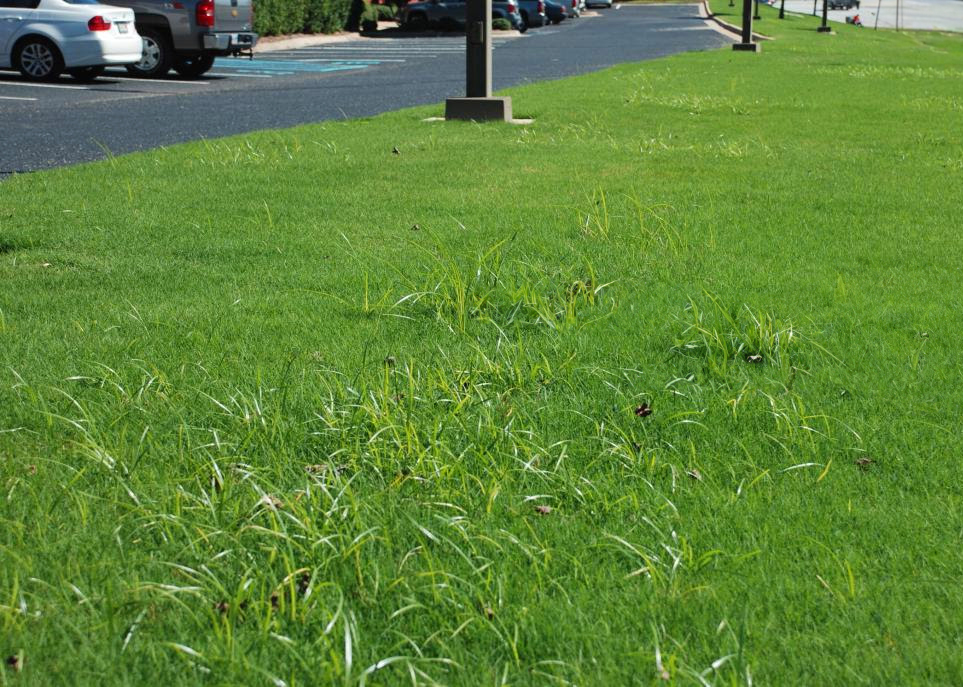
- Be diligent about bringing in new soil for your lawn. Often dirt is infested with nutsedge tubers, so make sure to sift through it before topdressing your lawn.
- Give your lawn multiple coats of pre-emergent herbicide in the late-fall and winter months
- Give your turf the advantage to push out nutsedge by following recommended practices for fertilizer application and maintaining ideal soil pH levels.
- Manage insect and disease infestations by applying pest control and fungicide products if necessary. These infestations can create bare patches which may be overtaken by nutsedge and other weeds.
- Water consistently as recommended for your grass, but ensure there are no overly moist areas. Young nutsedge thrives in moist soil, and the presence of nutsedge often indicates poor drainage.
Nutsedge will never die without being removed at the root, but we can treat it more frequently to keep it under control. If Nutsedge is in your lawn, give us a call and we can give you a discount for a more aggressive weed control and fertilizer plan.

